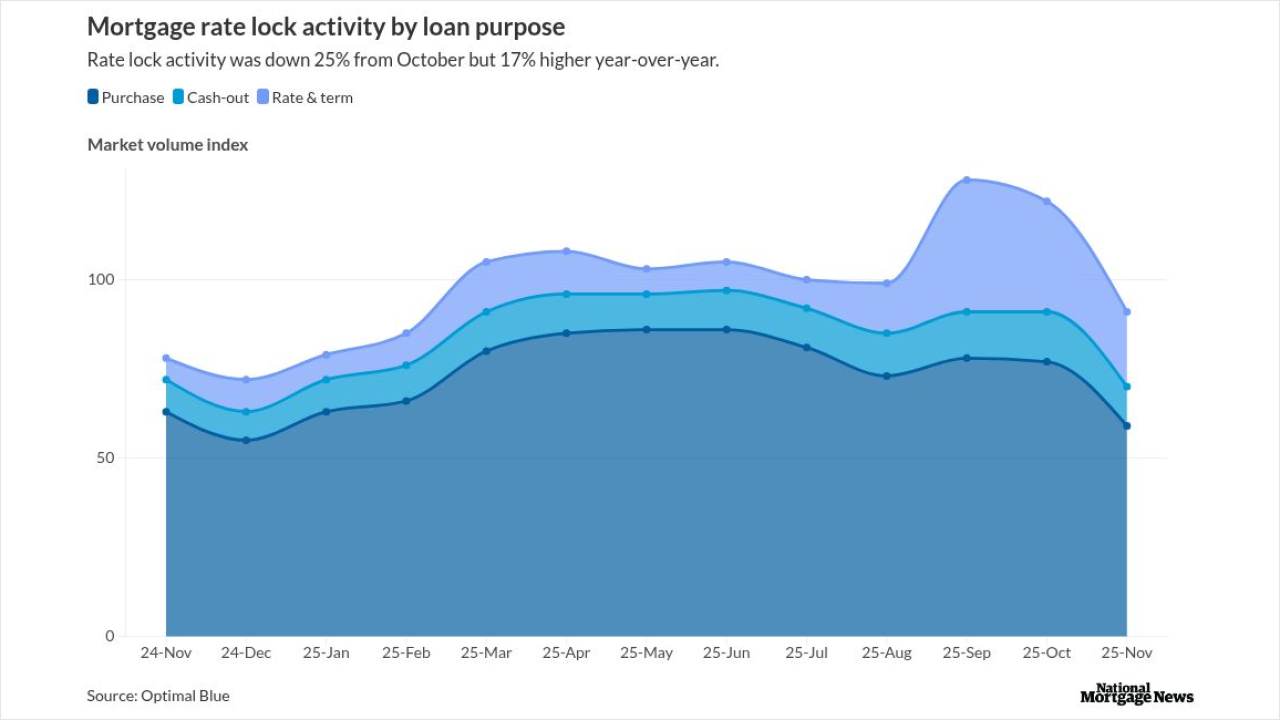Aperture Investors announced hiring Vladimir Lemin to lead its new structured credit business in early 2025, when fixed-income spreads were tight across asset classes and a few months before tariff threats fueled the volatility that investors seeking risk-adjusted returns thrive on.
Lemin began his career in structured finance at Lehman Brothers in 2005, and later at Magnetar Capital and One William Street Capital, where he managed portfolios of residential mortgage-based securities (RMBS), commercial mortgage-backed securities (CMBS), and asset-backed securities (ABS). At Aperture, he has built a five-strong team of generalists, each with at least 10 years of experience in two or more of the four securitization pillars, including collateralized loan obligations (CLOs), that aims to provide attractive risk adjusted returns.
"So far, the focus has been primarily CMBS, ABS, and a little bit of RMBS," Lemin said. "That's where we see the most compelling opportunities now."
The alternative credit unit received capital from Generali Investments, which in 2018 launched Aperture along with Peter Kraus, a long-time Wall Street executive and former CEO and Chair of AllianceBernstein. Aperture invests globally across fixed-income classes and equities. In a recent discussion with Asset Securitization Report (ASR), Lemin discussed issues faced by the securitization market and where his firm sees opportunities.
The focus has been primarily CMBS, ABS, and a little bit of RMBS.
ASR: Where do you see opportunities in the CMBS market?
Lemin: We focus on seasoned deals, single asset, single borrower (SASB) and conduit alike, in which the loans did not pay off in time. While there is uncertainty about the timing of resolution of these loans, we believe the loans have a fairly low probability of principal losses. We find that these tranches can trade quite a bit cheaper than similar bonds in other sectors of structured credit.
ASR: Can you provide an example of this scenario?
Lemin: Sometimes, you can find senior securities that are first in priority to receive principal and are actually currently receiving principal at very attractive levels. This happens when some loans in the deal get modified or extended in exchange for a "cash sweep," so every dollar of revenue generated by the property is used to pay debt service and expenses, and all the remaining amounts are used to pay down the bonds rather than being disbursed to the sponsor. The impact is twofold: first, it makes bond payments current, so investors receive principal and derisk every month; and second, it's a tremendous incentive for sponsors to refinance the loans, because due to this feature the property doesn't generate any cashflow for the sponsor.
ASR: Do you find these securities in specific vintages?
Lemin: The loans usually have 10-year original maturities, so we're looking at 2013 to 2015 vintages that were supposed to pay off between 2023 and 2025 but for some reason haven't. Whether they are SASBs with one loan or conduits that started out with 70 loans and now are down to a handful, we underwrite each loan and try to determine the full range of outcomes.
Even class B and C malls and offices that are in bad shape can sometimes be good candidates for redevelopment.
ASR: Does that mean Aperture stays away from new issue CMBS?
Lemin: We find that new issue bonds that are priced at par trade to the best-case scenario, under the assumption that the loans get refinanced at maturity. While you might get attractive carry, these securities look more like beta bonds to us, with a very limited alpha component. We prefer to do more work in seasoned CMBS and find something priced at 90 that may be worth par a couple of months later.
ASR: What is your view on CMBS more broadly?
Lemin: We like retail and office. One interesting observation is that even class B and C malls and offices that are in bad shape can sometimes be good candidates for redevelopment, especially in jurisdictions where there is a lot of affordable housing and land is scarce. Sometimes these municipalities provide very good tax incentives for builders, and a struggling mall can be converted into a multi-purpose property, with multifamily, retail, and some "experiential" tenants, such as a cinema and restaurants. Over the last few years, we've seen several distressed malls and offices taken over and in those instances the loans paid off in full.
Also, we're not shy about going into secondary and even tertiary markets, where we see signs of positive economic activity, and in those markets we tend to focus on the best buildings. People in Columbus, OH, want to work in offices with food courts, gyms, and basketball courts, and often those buildings are economically viable.
ASR: So essentially the trophy buildings in secondary markets?
Lemin: You can say it like that. Although, mostly by "trophy buildings" people mean Park Avenue towers or iconic buildings in Chicago, LA, or San Francisco. But I agree with you.
ASR: Why is ABS attractive?
Lemin: ABS is a very broad although somewhat shallow market, and there is always something interesting to do in ABS. This year, with respect to auto, unsecured consumer, and other core securitizations, we saw spreads widen—post Liberation Day and recently in September—and that gave us opportunities to invest at historically attractive levels.
ASR: When spreads are tight, do you use leverage?
Lemin: We use leverage to some degree, but we don't lever up more to fight tighter spreads – that would be delivering levered beta to investors, while we are focused on alpha. We try to be disciplined about selling when spreads reach historically tight levels.
ASR: How do you replace those bonds?
Lemin: We look at new sectors such as wireless, whole-business, datacenter and equipment securitizations. We also underwrite new issuers, as securitizations from first-time originators often trade wider at first. However, if you underwrite the company thoroughly, and pick good bonds then spreads are likely to tighten, and that can be another source of alpha for our portfolio.
ASR: What else do you look for?
Lemin: We look for well-structured deals. For example, similar to auto and consumer ABS, equipment securitizations often have meaningful excess spread, and in the better structures it's used to pay down the bonds. That leads to de-levering of the capital structure and the probability of what we call "roll downs," where bonds you buy today look a lot better in the future—more robust and less likely to take principal losses. That in turn opens them to ratings upgrades, and possibility of tighter trading levels. So as an investor you realize both the carry and potential price appreciation. In weaker markets, the spread will widen less for these bonds, and their price volatility will be lower.
We don't believe CLO mezz is a sector where you can deliver optimal risk-adjusted returns.
ASR: What would prompt Aperture to step more into the RMBS or CLOs markets?
Lemin: We look for the sectors where we can find the best returns for a unit of risk, and so far it's been CMBS and ABS. While post Great Financial Crisis RMBS became distressed and presented investors with interesting opportunities, recently the sector has been almost priced to perfection. We entered into a few RMBS positions post-Liberation Day to take advantage of temporary widening, but we were able to find very few [opportunities].
CLOs are difficult for us. Conceptually there is meaningful negative convexity there. Plus, CLOs add corporate exposure, and it's questionable in my mind whether that's an optimal way to add that risk, versus high-yield or investment-grade indices that are more liquid. And sometimes investors don't want us to buy CLOs, because they already have corporate exposure in other parts of their fixed income portfolios.
ASR: Do you find CLO mezzanine tranches attractive?
Lemin: [Mezzanine spreads] are wide for a reason and they often stay wide. We don't believe CLO mezz is a sector where you can deliver optimal risk-adjusted returns to investors. That's not to say there are no opportunistic trades there, and we'll step in when appropriate.




